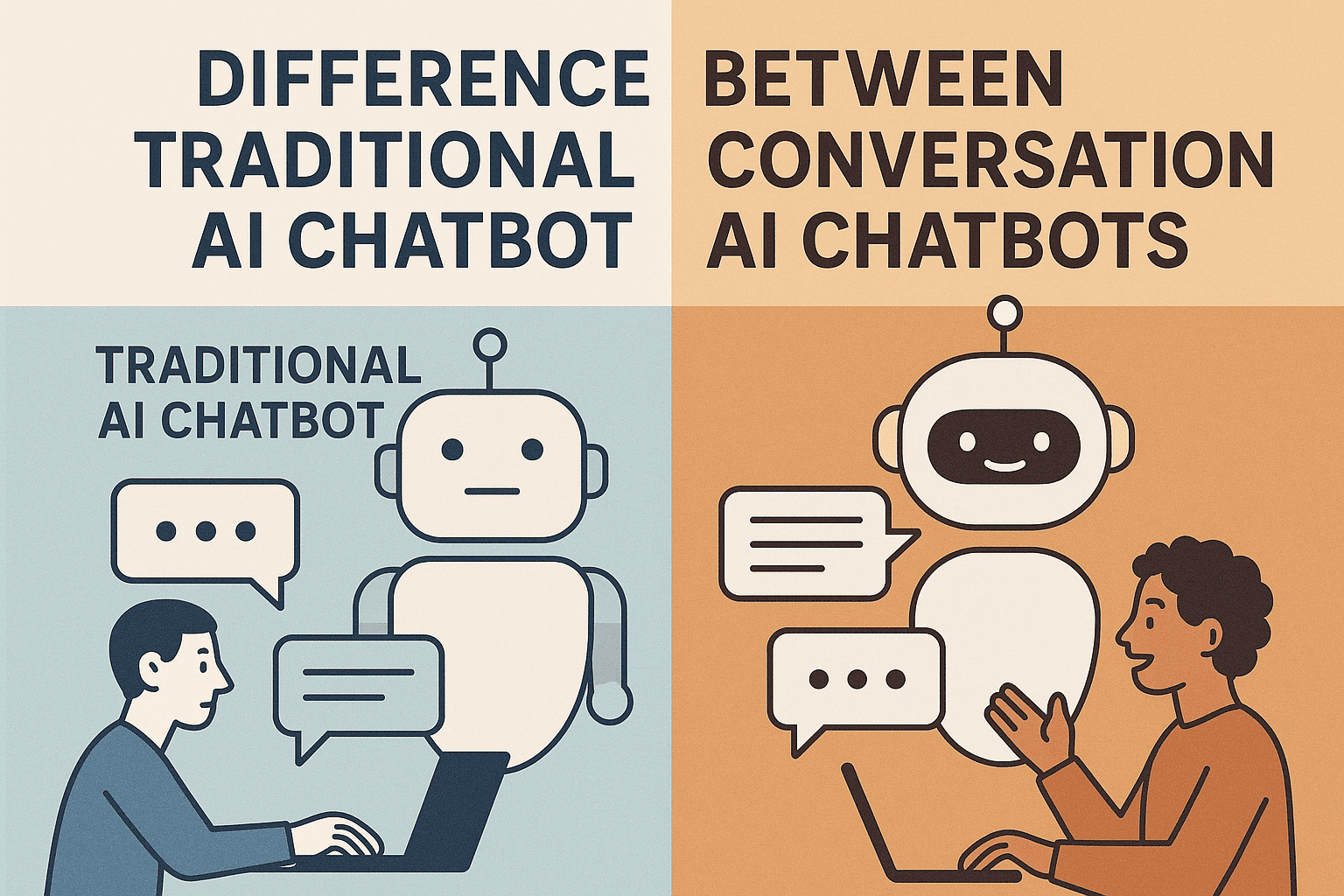In today’s digital age, chatbots have become an essential tool for businesses to provide customer support and automate sales processes. However, not all chatbots are created equal. Traditional chatbots, also known as rule-based chatbots, have been around for years, but they have several limitations that can lead to a poor user experience. On the other hand, conversational AI chatbots have revolutionized the way businesses interact with their customers, providing a more natural and personalized experience.
The Limitations of Traditional Chatbots
Traditional chatbots rely on scripted answers and use a decision-tree approach to respond to user queries. They are programmed to react to specific keywords or phrases, but they struggle with complex requests and nuances of human language. This can lead to frustration for users, as they may not get the help they need or may be forced to repeat themselves multiple times.
Some of the key limitations of traditional chatbots include:
- Limited understanding: Traditional chatbots only react to what they’ve been programmed to recognize, making it difficult for them to understand user intent and context.
- Lack of personalization: Basic chatbots can’t recall earlier interactions and can’t deliver personalized responses based on conversation history.
- Frustrating user experience: If a user doesn’t get a helpful answer or can’t get their issue resolved, it creates a frustrating experience that can lead to customer dissatisfaction.
- Inability to learn and improve: Unlike conversational AI systems, traditional chatbots lack machine learning capabilities, which means they can’t learn from past interactions and user feedback and improve over time.
- Language limitations: Basic chatbots are typically designed for a single language, making it difficult to support multilingual users.
- Limited scalability: As your business grows and evolves, the number of rules required to handle all possible scenarios grows exponentially, making it increasingly difficult and time-consuming to manage and scale.
The Benefits of Conversational AI Chatbots
Conversational AI chatbots, on the other hand, use natural language processing (NLP) and machine learning (ML) to understand user intent, content, and sentiment, and respond accordingly. They can handle complex requests, nuances of human language, and even emotions, providing a more natural and personalized experience.
Some of the key benefits of conversational AI chatbots include:
- Improved user experience: Conversational AI chatbots can understand user intent and context, providing more accurate and relevant responses.
- Increased personalization: Conversational AI chatbots can recall earlier interactions and deliver personalized responses based on conversation history.
- Better customer satisfaction: Conversational AI chatbots can handle complex requests and nuances of human language, reducing the likelihood of customer frustration.
- Continuous improvement: Conversational AI chatbots can learn from past interactions and user feedback, improving over time.
- Multilingual support: Conversational AI chatbots can support multiple languages, making it easier to reach a global audience.
- Scalability: Conversational AI chatbots can handle a high volume of conversations, making it easier to manage and scale.
How Conversational AI Chatbots Work
Conversational AI chatbots use a combination of NLP and ML to understand user intent, content, and sentiment, and respond accordingly. Here’s a high-level overview of how they work:
- Text analysis: The chatbot analyzes the user’s input text to identify key phrases, entities, and intent.
- Entity recognition: The chatbot recognizes entities such as names, locations, and organizations.
- Intent identification: The chatbot identifies the user’s intent, such as booking a flight or making a purchase.
- Response generation: The chatbot generates a response based on the user’s intent and context.
- Post-processing: The chatbot performs post-processing tasks such as spell-checking and grammar-checking.
FAQs
Q: What is the difference between traditional and conversational AI chatbots?
A: Traditional chatbots rely on scripted answers and use a decision-tree approach, while conversational AI chatbots use NLP and ML to understand user intent, content, and sentiment.
Q: Can conversational AI chatbots handle complex requests?
A: Yes, conversational AI chatbots can handle complex requests and nuances of human language.
Q: Can conversational AI chatbots support multiple languages?
A: Yes, conversational AI chatbots can support multiple languages.
Q: How do conversational AI chatbots improve over time?
: Conversational AI chatbots can learn from past interactions and user feedback, improving over time.
Q: Can conversational AI chatbots handle emotions?
A: Yes, conversational AI chatbots can handle emotions and respond accordingly.
People Also Ask
Q: What is the future of chatbots?
A: The future of chatbots is conversational AI, which will enable more natural and personalized interactions between humans and machines.
Q: How can I implement conversational AI chatbots in my business?
A: You can implement conversational AI chatbots by integrating them with your existing customer service platform or by using a chatbot development platform.
Q: What are the benefits of using conversational AI chatbots?
A: The benefits of using conversational AI chatbots include improved user experience, increased personalization, better customer satisfaction, and continuous improvement.
Q: Can conversational AI chatbots replace human customer support agents?
A: While conversational AI chatbots can handle many customer support tasks, they are not yet capable of replacing human customer support agents entirely.
Conclusion
Conversational AI chatbots have revolutionized the way businesses interact with their customers, providing a more natural and personalized experience. While traditional chatbots have limitations, conversational AI chatbots can handle complex requests, nuances of human language, and even emotions, making them a more effective tool for customer support and sales automation.
By understanding the benefits and limitations of both traditional and conversational AI chatbots, businesses can make informed decisions about which type of chatbot to implement and how to use them to improve customer satisfaction and drive sales.ht AI tool for your business needs and goals, and don’t be afraid to experiment and try new things.
